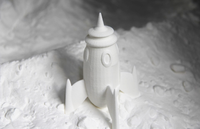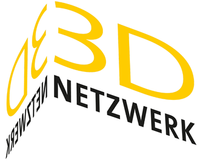3D innovaTech
ENGINEERING SOLUTIONS
Selective Laser Sintering (SLS)
Selective laser sintering was developed in the 1980s by Dr. Carl Deckard and Dr. Joe Beaman at the University of Texas, Austin. It is one of the first 3D printing technology ever created and is still being refined and developed thanks to the recent advancements in machinery, materials, and software. This 3D printing method has been adapted for fabricating a range of materials such as metals, glass, ceramics, plastics, and composites. These technologies are categorized under powder bed fusion. Powder bed fusion is an additive manufacturing process wherein thermal energy source selectively melts and fuses the material powder to create a solid part. Selective laser sintering is based on plastic material and is one of the most common types under the family of powder bed fusion.
Working principle of Selective Laser Sintering
In selective laser sintering, the material powder is spread on the built platform by a roller. A laser scans the powder bed and selectively sinters the polymer powder, fusing them together. Sintering is a heat treatment process wherein the metal powder is subjected to high temperature (below the melting point) or pressure to cause the powder to compact and form a solid part. During the fabrication, once the layer has been printed the build platform lowers by layer thickness. The process is then repeated until the part is fully printed, and the part is fabricated layer by layer. The fabrication chamber is maintained at a temperature slightly below the melting point of the polymer powder during the process. This ensures that the polymer fuses properly and doesn’t rely fully on the thermal energy source. No supports are required with this method since overhangs and undercuts are supported by the solid powder bed. After the parts are fully printed, they require some cooldown time to obtain good fusion and high quality. Once the part is fully printed, it should be removed from the chamber and cleaned of excess unused powder. The unfused powder can then be filtered and recycled for reuse. The final product usually has a grainy finish. Post-processing methods such as dyeing, spray painting, polishing can be used to improve the aesthetics of the SLS printed parts. Furthermore, post-processing methods such as metal painting, coating can be used to improve the functionality of the parts.
Materials and applications for Selective Laser Sintering
The most commonly used material for SLS 3D printing is Polyamide 12, also known as Nylon 12. Some other materials used are polyamide 11 and PEEK. To enhance the properties of the end part, Nylon based composites with aluminide, carbon or glass can be used. SLS 3D printing is ideal for functional prototyping and creating end-user parts. SLS has applications in various sectors, namely aerospace, automotive, consumer electronics, medical, jigs & fixtures, tooling.
Advantages of SLS
• Ideal for functional prototypes.
• Complex geometries can be easily printed without supports.
• Suitable for producing batch sizes.
Advantages of SLS
• Ideal for functional prototypes.
• Complex geometries can be easily printed without supports.
• Suitable for producing batch sizes.
Disadvantages of SLS
• Grainy surface finish.
• Longer lead time.




